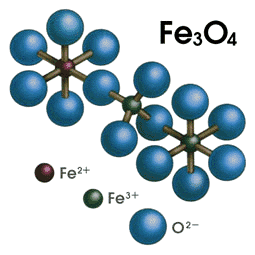Superparamagnetic iron oxide nanoparticles (SPIONs) are used widely in both research and clinical realms for magnetic separation, isolation, drug delivery, cancer therapy, and imaging. It is important to examine how these particles change during storage in order to ensure accuracy and consistency. A recent study of particles stored for 12 weeks at temperatures ranging from 4°C to 45°C indicates that the particles significantly change in composition and biocompatibility over time, and that a storage temperature of 4°C allows the smallest magnitude of change.

Multi-iron-oxide-core particles coated with lauric acid and a shell of albumin were used in this study. After synthesis the particles were divided into groups and stored at 4, 20, 37, and 45°C for three months. Particles were tested weekly to track any changes in shape, size, charge, saturation magnetization, biocompatibility, and chemical composition. To collect that information, a handful of tools were used:
- Photon cross-correlation spectroscopy (PCCS) and dynamic light scattering (DLS) to monitor hydrodynamic size and surface charge of the particles.
- Fourier transform infrared spectroscopy (FT-IR) to look for chemical changes in the shell structure.
- X-ray diffraction to detect changes in iron-oxide core crystal structures to determine if the Fe3O4 cores were being oxidized to γ-Fe2O3.
- Transmission electron microscopy (TEM) to observe the size and shape of iron oxide cores.
- Flow cytometry on human T-lymphoma cells every two weeks to investigate biocompatibility as measured by cellular morphology, phosphatidylserine exposure, plasma membrane integrity, mitochondrial membrane potential, and DNA degradation of the cells after 24 to 48 hours of incubation with the particles.
- Vibrating sample magnetometry (VSM) to examine saturation magnetization.
The study found that there is no change in particle size, surface charge, or shape during 12 weeks of storage at any of the temperatures. The FT-IR found no changes in the chemical composition of the shell, but the particle solution did change color over time. This change in color is indicative of oxidation of the iron-oxide cores, which was confirmed by x-ray diffraction. The extent of oxidation increased with greater storage time and with higher storage temperature. The study found that saturation magnetization greatly decreases when the SPIONs are stored for 12 weeks at high temperatures, with the steepest drop occurring within the first four weeks. This drop is 33% less when the nanoparticles are stored at 4°C.
Cellular uptake of the nanoparticles decreased with increasing storage temperature. The cell toxicity decreased with increased storage temperature, but this effect was only observed at high nanoparticle concentrations above 200 μg/mL. The decrease in toxicity by particles stored at higher temperatures might be related to the decreased cellular uptake of nanoparticles.
When cellular uptake, decreased oxidation levels, and maintenance of saturation magnetization are used as benchmarks, it seems that the optimal storage temperature is 4°C.
Overall, the particle stability is most dependent on storage time, so use your iron-oxide nanoparticles quickly for the best results!
Different storage conditions influence biocompatibility and physicochemical properties of iron oxide nanoparticles. Zaloga, J. Int J Mol Sci. 2015 Apr 24;16(5):9368-84. doi: 10.3390/ijms16059368.
Related news:





